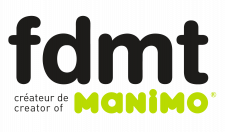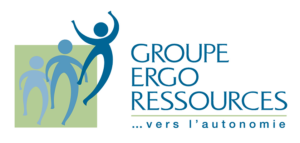Organization seems obvious to us – you either have it, or you don’t. Unfortunately, this popular belief is completely wrong! It’s a long learning process that requires the acquisition of numerous skills. Children ages 9 to 10 don’t generally spontaneously adopt strategies of classification and organization by themselves. Their cognitive processes are not ma-ture enough to get them there. Preteens 11 to 12 years old do it better, but here it depends if the foun-dation is in place to learn to organize well. One of the important foundations of organization is creativity or the ability to generate ideas.
A child with sensory difficulty and/or organizational difficulty doesn’t know:
What to choose from two things.
How to play.
How to begin a task.
How to put things in order in a desk or locker.
Here is a situation that I see regularly in the clinic and I can often predict it before it happens:
We are playing with Playmobil.
Me: What’s the name of your man?
Child: I don’t know.
Me: That’s not a good name. We have to pick anoth-er one.
Child (laughs) – No – I don’t know what to call him.
Me: Well, you have to find a name.
Child: (speechless)
Me: You have no idea?
Child: No.
Me: OK – I’ll call my person Thelesphore.
Child: Yikes – that’s a weird name.
In fact, I can say anything to show the child that he can say whatever he wants, there’s no problem, and they can say ideas that are a bit “strange”. I sometimes use the parent’s name, hoping the child can also find a name that he knows.
As we continue to the end, the game generally remains the same: I get killed, I disappear or he decides that his character will play somewhere else away from me to avoid having to interact or be confronted with his difficulties. I play this game with children ages 4 to 10 years old and if they don’t have any ideas, they react in the same way regardless of their age.
A Solution: Symbolic Play.
Symbolic play or pretend play is essential to a child’s life. This type of play provides the basis for a relationship between the child and the world around him (do like mom does, I’m a girl or a boy, etc.) and also organization.
Why? Because the child needs ideas to get organized and the emergence of ideas happens between others through symbolic play.
When you need to organize cabinet storage, you do your job by planning and putting things here, the other there, etc… But to organize, you must first have ideas that you will draw on from past experiences or concepts that you have acquired from your parents, teachers, etc… You will also match concepts to bring out a new idea. It is from this that you plan your task, and it’s from your planning that you carry out the task.
A child who has no ideas doesn’t instinctively tap into this repertoire of experiences and past successes. He doesn’t have the means to solve the mystery. He has tools (experiences, learning), but doesn’t know how to find them.
So, to help your child organize better, stimulate creativity. Having ideas is a state of mind that allows us, among other things, to compose text and mathematical problem solving which forms the basis of organization, which is essential to learning.
Tips and Advice to Foster the Emergence of Ideas
At home:
Foster symbolic play and play with your child because he has the tendency to not do so by himself.
Ask him to help you find a simple solu-tion to a problem.
Invite more than one friend over at a time, ideally a group of four (including your child). A group activity requires more compromise and creativity.
Choose friends with whom your child feels comfortable enough around. If he tends to isolate himself, it’s because it’s too difficult for him
At Playschool (3 Years Old)
Ask the child to invent names of toys.
If there is a tendency to always choose the same game, favor without insisting too much, diverse games and play with him so he can understand the meaning of games.
Build small scenarios with him (role playing). Use, according to the interest of the child, dolls, animals, toy cars etc. so he can talk with his characters and invent a story (what the characters will do). It’s best to start to proceed with an adult. With another child, the one who lacks ideas tends to adopt the same scenario or parallel play. Watching children playing in a group may be indicative of their ability to organize ideas.
At School
Do a random cutting activity. Create a table of materials (paper plates, straws, egg cartons), anything that can be cut with standard scissors and is precisely a cutting activity. You’ll have time to observe if the child:
Cuts randomly without creativity.
Copies his neighbor.
Demonstrates original ideas.
Whenever possible, schedule periods of creativity without a specific theme, allowing the child to be inventive.
If the child has no ideas, show him a crazy one so he can see “definitely not that one” but you’re giving him the opportunity to have ideas that are a bit strange. Generally, when an idea arises, applaud it even if it’s average. Confident with his initial success, he’ll improve.
One important thing – the adult tends to impose his organization on the child. This doesn’t foster the emergence of thoughts and ideas. If you develop the habit of using the child’s ideas, his organization, you’ll create a much more solid foundation for the future. For example, instead of telling him how to store toys in his room, office, or locker, take time to think with him and plan you’re tidying up together. Guide him more by supporting his good ideas – you’ll be surprised with the results!
In summary, it’s important to have a foundation. If your child isn’t capable of developing his own ideas, has learned to organize himself by adopting someone else’s methods, or when there is no simple recipe; he feels frustrated. When a child has difficulty, we must work to ensure a solid foundation of development.
The foundation of organization is knowing how to generate ideas.
Sonya Côté, Pediatric Occupational Therapist-www.ger-ergo.com



Leave A Comment